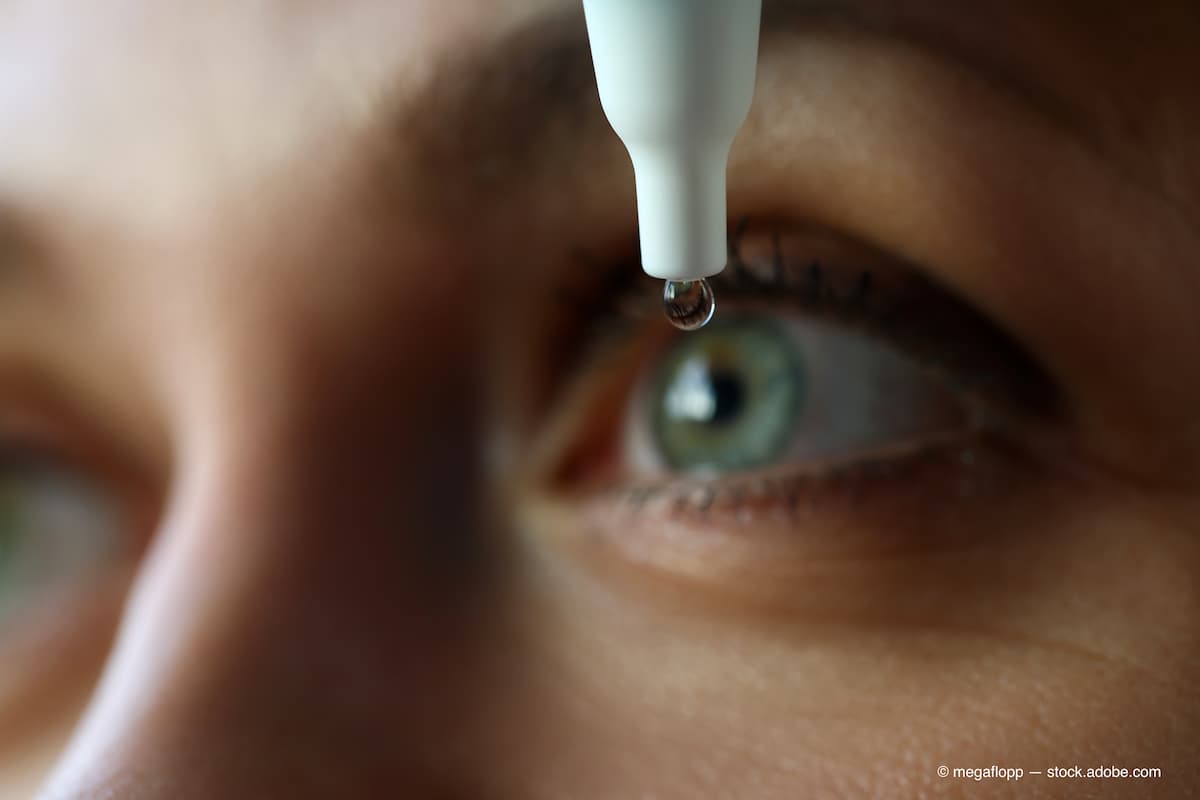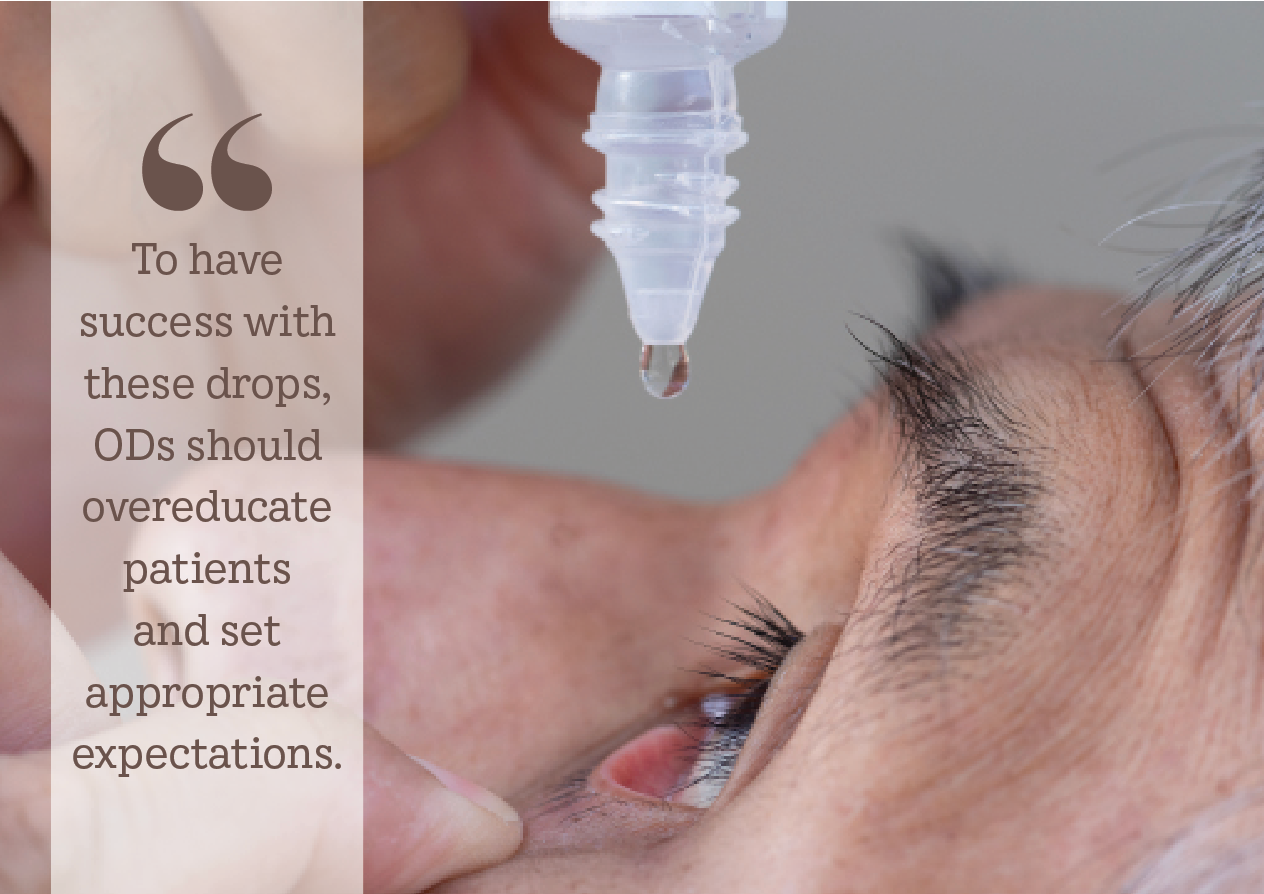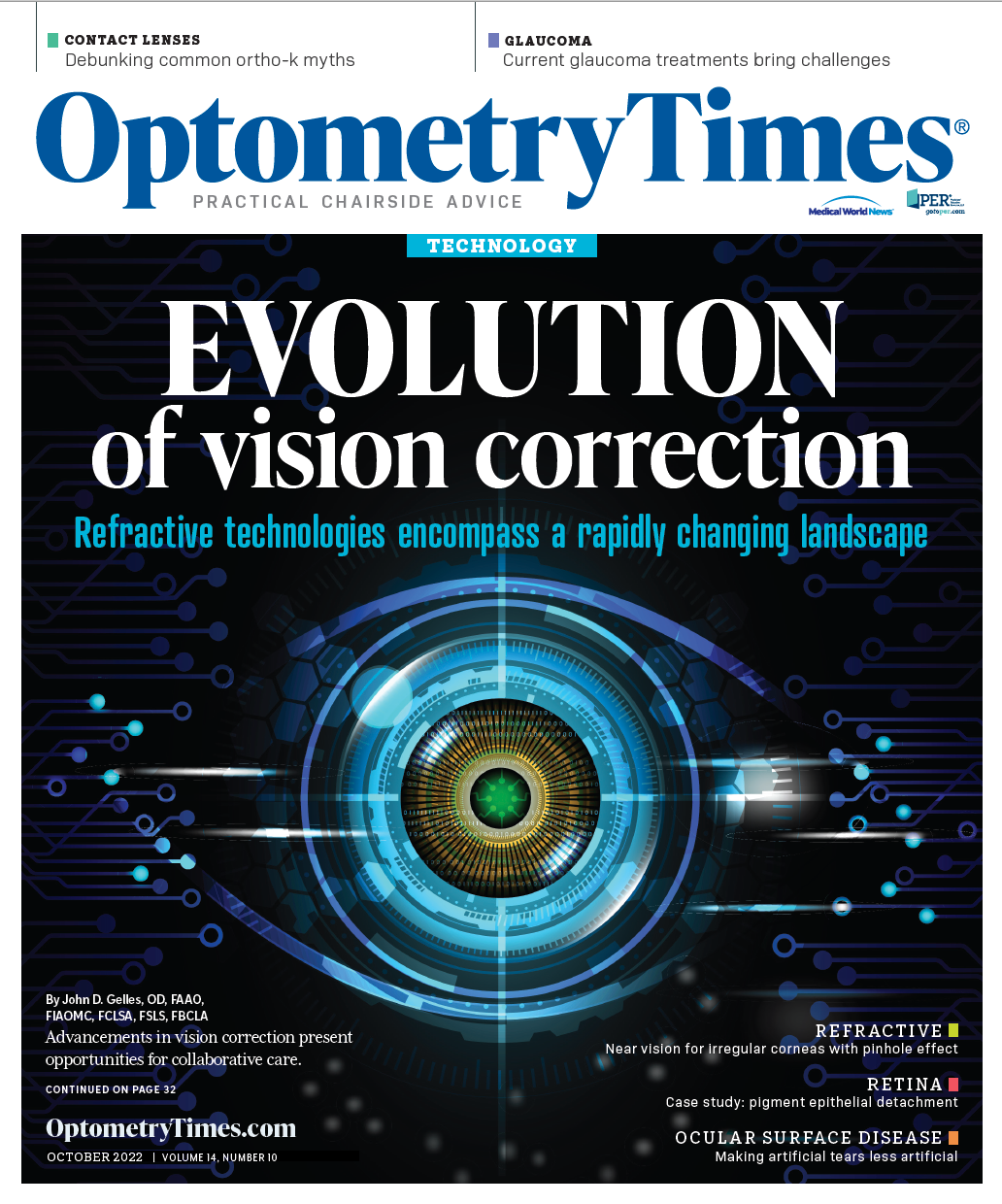Agent improves near vision for irregular corneas with pinhole effect
Presbyopia-correcting drops for patients with low, up-close visual function.
The technology we have for treating irregular corneas is good, but not perfect. For example, with scleral lenses we often must take from patients’ distance vision to give them better near vision. But when patients need their scleral lenses just to function, this is not an attractive option.

For refractive intraocular lens (IOL) patients, current technology has trade-offs—sometimes leaving patients with less reading vision than they desire. With the availability of pilocarpine hydrochloride (HCl) ophthalmic solution, 1.25% (Vuity; Allergan), these patients can experience improved functional near vision without losing any distance.
The drop was approved in October 2021 based on data from the 750-patient phase 3 GEMINI 1 (NCT03804268) and GEMINI 2 (NCT03857542) studies.1 Patients using the agent gained 3 lines or more in mesopic binocular distance corrected near visual acuity, without losing more than 1 line (5 letters) of corrected distance visual acuity at day 30, hour 3, vs placebo. No serious adverse events (AEs) were observed; the most common nonserious treatment-emergent AEs were headache and eye redness.1
Education, expectations
When I talk to patients about their near vision, I remind them that their lenses are aimed at giving them distance vision, and the drops can give them improved reading vision. Patients understand the concept, like having a shirt for your top and shorts for your legs—2 different functions. My patients have been very happy with their results; some choose to use the drops every day, and others do so only for work or specific activities.
As with all treatment options, patient selection, education, and setting appropriate expectations are key. I let patients know that they may not experience much of an improvement the first couple of times they use the drops, and they might have some temporary dimming of their vision, a headache, or a red eye. After about a week of use, these AEs should resolve. I let patients try it for themselves and have had a high percentage of them continue to use the drops.
Patient types

Many of my scleral lens patients have had previous radial keratotomy (RK). The pupil-shrinking effect of pilocarpine HCI ophthalmic solution, 1.25% helps mitigate the effect of the RK scars, avoiding the ectatic part of the cornea, and—in effect—isolating the visual axis. RK patients, even those who do not wear scleral lenses, may be excellent candidates for pilocarpine HCI ophthalmic solution, 1.25%. In our MD-OD practice, I occasionally see patients who have received an accommodating, multifocal, or trifocal IOL who may have 20/20-ish visual acuity at all distances, but they are not “20/happy.”
It makes sense that if we apply the pinhole effect to the pupil, we will reduce glare and halo along with improving near vision. I find that this approach has been successful in these patients, with many using the drops daily. Even if patients do not choose to continue, they know they have an option that can make their vision sharper. Many times, this is enough to reassure patients and make them happy.
Conclusion
To have success with these drops, ODs should overeducate patients and set appropriate expectations. Let patients know that the solution is not perfect—they are not going to see like they did when they were 18. I call it giving vision a boost or supercharging it.
When prescribing the drops, I tell every patient 3 things:
» Your eyes might get a little red the first couple of times you use the drops.
» You might get a slight brow ache from shrinking the pupil size, which uses muscles your eyes have not used in a long time.
» You might experience a bit of a dimming effect. All these AEs should go away after about a week.
As more presbyopia-correcting pharmaceuticals come to market, we hope to have products that last longer and have even fewer AEs like brow ache and headache.
I expect eye care specialists will also be looking at twice-daily dosing with pilocarpine HCI ophthalmic solution, 1.25%.
Reference
1. Waring GO IV, Price FW Jr, Wirta D. Safety and efficacy of AGN-190584 in individuals with presbyopia: the GEMINI 1 phase 3 randomized clinical trial. JAMA Ophthalmol. 2022;140(4):363-371. doi:10.1001/jamaophthalmol.2022.0059

Newsletter
Want more insights like this? Subscribe to Optometry Times and get clinical pearls and practice tips delivered straight to your inbox.